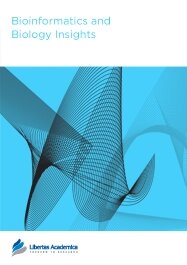

Publication Date: 12 Nov 2012
Type: Original Research
Journal: Bioinformatics and Biology Insights
Citation: Bioinformatics and Biology Insights 2012:6 247-254
doi: 10.4137/BBI.S9902

Myosins are one of the largest protein superfamilies with 24 classes. They have conserved structural features and catalytic domains yet show huge variation at different domains resulting in a variety of functions. Myosins are molecules driving various kinds of cellular processes and motility until the level of organisms. These are ATPases that utilize the chemical energy released by ATP hydrolysis to bring about conformational changes leading to a motor function. Myosins are important as they are involved in almost all cellular activities ranging from cell division to transcriptional regulation. They are crucial due to their involvement in many congenital diseases symptomatized by muscular malfunctions, cardiac diseases, deafness, neural and immunological dysfunction, and so on, many of which lead to death at an early age. We present Myosinome, a database of selected myosin classes (myosin II, V, and VI) from five model organisms. This knowledge base provides the sequences, phylogenetic clustering, domain architectures of myosins and molecular models, structural analyses, and relevant literature of their coiled-coil domains. In the current version of Myosinome, information about 71 myosin sequences belonging to three myosin classes (myosin II, V, and VI) in five model organisms (Homo Sapiens, Mus musculus, D. melanogaster, C. elegans and S. cereviseae) identified using bioinformatics surveys are presented, and several of them are yet to be functionally characterized. As these proteins are involved in congenital diseases, such a database would be useful in short-listing candidates for gene therapy and drug development. The database can be accessed from http://caps.ncbs.res.in/myosinome.
PDF (2.80 MB PDF FORMAT)
RIS citation (ENDNOTE, REFERENCE MANAGER, PROCITE, REFWORKS)
BibTex citation (BIBDESK, LATEX)
XML
PMC HTML

Bioinformatics and Biology Insights fills a gap in current journals. Ever more often, bioinformatics and detailed analysis of data creates novel, unexpected insights. It is good to have a journal which focusses on exactly this aspect of bioinformatics research, putting the biology insights upfront with high respect for the different methods in bioinformatics.
Facebook Google+ Twitter
Pinterest Tumblr YouTube